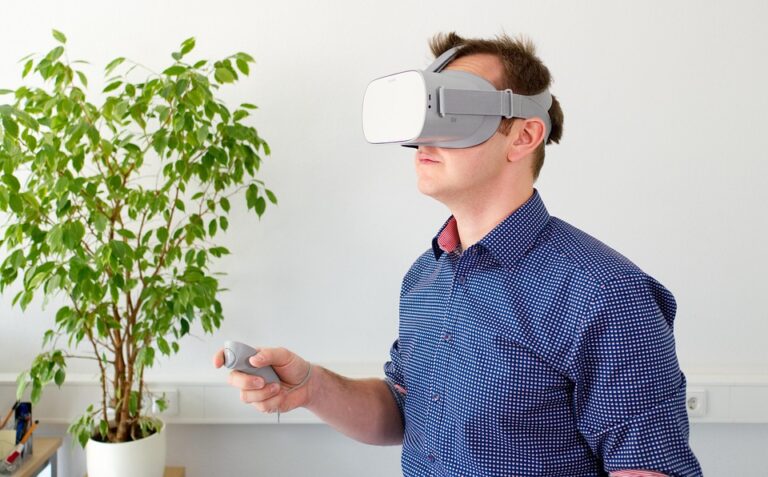Beyond Pokémon Go: The Future of Augmented Reality Gaming
In recent years, augmented reality (AR) games have surged in popularity, captivating millions of players with their unique blend of digital and real-world experiences. Although games like Pokémon Go marked the beginning of a new era in mobile gaming, the future of augmented reality games appears even more promising and multifaceted. In this article, we will explore the evolution, current trends, and future possibilities of augmented reality gaming, shedding light on what lies ahead for this thrilling genre.
The Evolution of Augmented Reality Games
Augmented reality has roots in the early 1990s but gained significant traction with the launch of smartphones that are equipped with advanced sensors, cameras, and GPS capabilities. The golden age of augmented reality games arguably started with the release of Pokémon Go in 2016, which turned urban environments into battlegrounds for virtual monsters. The game pulled in approximately 28 million daily active users at its peak, showcasing the enormous potential for AR in gaming.
Market Growth and User Engagement
Current statistics reflect that the AR gaming market is on an upward trajectory, valued at approximately $1.5 billion in 2023 and expected to exceed $3 billion by 2025. This growth corresponds with technological advancements in AR gaming development and an increasing interest among consumers. As mobile devices enhance their ability to support AR applications, we expect an explosion of diverse AR experiences.
Key Trends Shaping the Future of Augmented Reality Gaming
1. Integration of AI and AR
Artificial Intelligence (AI) can redefine the landscape of augmented reality games. Imagine an AR game that adapts to a player’s unique playing style and surroundings. With AI, developers can create intelligent NPCs (non-player characters) that learn and evolve based on player interactions, enriching the gameplay experience. This integration will not only bring more depth to the storylines but also engage players in ways that traditional gaming can’t.
2. Cross-Platform Compatibility
As players seek seamless gaming experiences, cross-platform compatibility is becoming crucial. Future augmented reality games will likely integrate various devices—such as smartphones, tablets, and AR glasses—enabling players to interact with the game world regardless of the platform. This flexibility could lead to larger, more vibrant communities and foster collaborative gameplay.
3. Enhanced Social Connectivity
One of the standout features of Pokémon Go was its ability to bring people together, fostering social interactions among players. The future of augmented reality games may focus even more on enhancing social dynamics. Games that encourage teamwork or competition within real-world environments will not only make for exciting gameplay but also strengthen real-life social ties.
4. Gamification in Everyday Life
AR games already influence how we engage with the world around us, but as technology evolves, we’ll likely see gamification elements woven into daily activities. Think of a fitness app that transforms your run into an epic quest, with rewards for completing challenges. Future augmented reality games could motivate people to participate in physical exercise, community events, or explore local businesses, bridging the gap between digital experiences and reality.
Examples of Emerging Augmented Reality Games
A compelling example is Niantic’s latest offering, “Pikmin Bloom”. Similar to Pokémon Go, the game transforms everyday walks into an adventure, encouraging players to explore their surroundings. This not only promotes outdoor activities but also connects friends through collective challenges. Such games demonstrate the endless possibilities for augmented reality experiences that intertwine with real-world engagement.

Image 1: Players interacting with augmented reality elements in a public space.
Challenges Faced by Augmented Reality Games
Despite their potential, augmented reality games face challenges like privacy concerns, data security, and health implications tied to extensive screen time. Moreover, developers must focus on creating safe environments, especially in urban settings where players may become distracted by digital elements. Addressing these challenges is essential for fostering a sustainable and secure AR gaming community.
Conclusion: A Bright Future Ahead
As we look beyond Pokémon Go, the potential for augmented reality games is vast, promising innovative ways for people to interact with both the digital and physical worlds. As the industry adapts to emerging technologies like AI and cross-platform compatibility, the gaming community can expect richer, more immersive experiences.
Are you ready to step into the vibrant world of augmented reality games? For more insights into gaming trends and technologies, check out our articles on “The Rise of Mobile Gaming” and “Future Technologies in Gaming”.
For external references, visit Statista and Pew Research for comprehensive data on the gaming industry. Embrace the journey through augmented reality, as the future is unfolding right before our eyes.

Image 2: A futuristic concept of augmented reality gaming showing gameplay integration in daily life.


